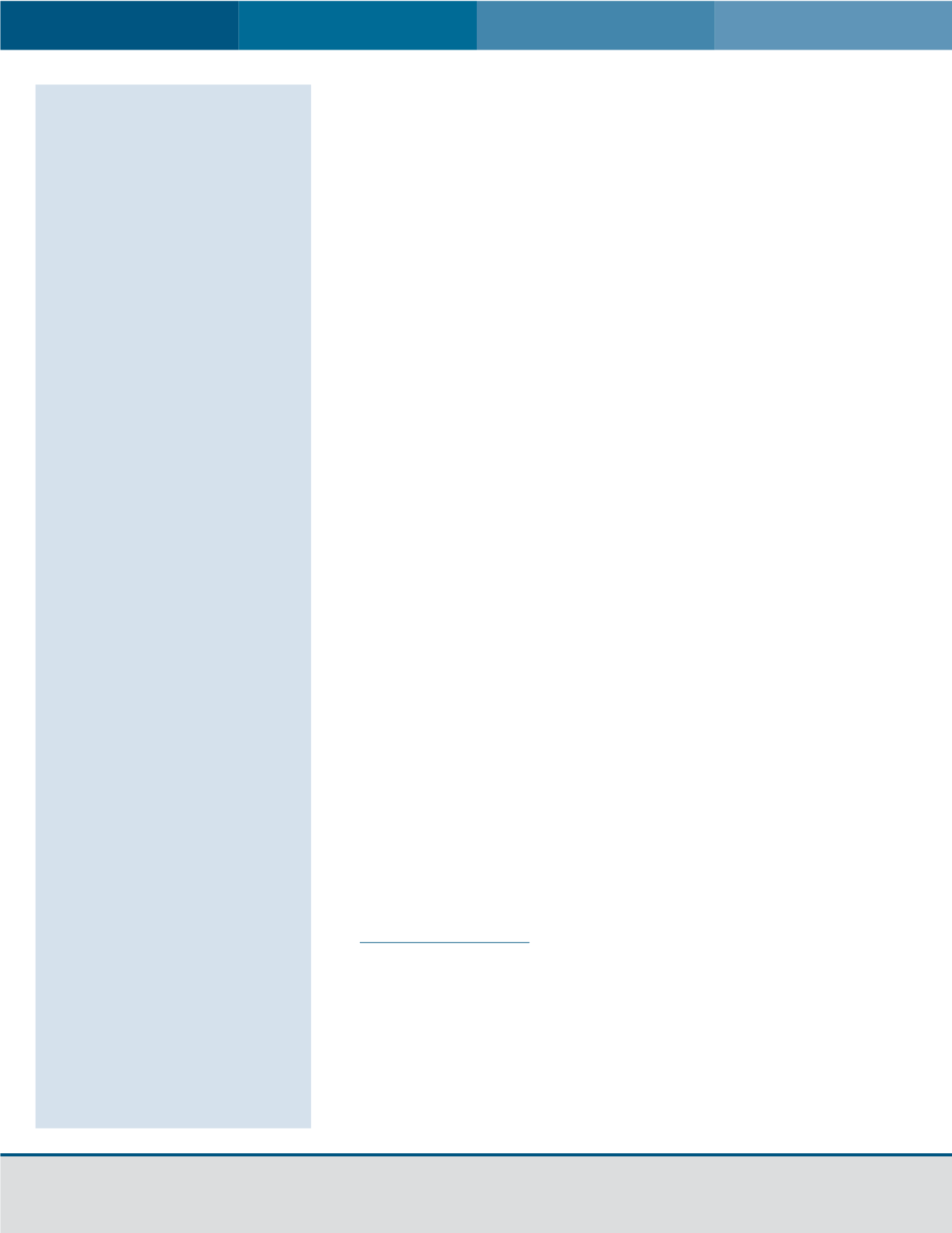
28
AASM Membership Sections Newsletter
■
Issue #6
American Academy
of Sleep Medicine
California San Diego. She completed
her MD and MPHTM at Tulane
University and her training in Internal
Medicine, Pulmonary & Critical Care
and Sleep Medicine at the University
of Maryland School of Medicine.
Her research interests include
ambulatory models of sleep care,
health access, peri-operative risk
related to sleep disordered breathing
and the relationship between
PTSD and sleep apnea. She is a
member of the VA Sleep Network
steering committee, a group of VA
sleep providers working together to
promote high quality clinical care to
standardize programmatic processes
and to develop multisite collaborative
sleep research.
Chad Hagen, MD
Dr. Chad Hagen, MD, is Director
of the Oregon Health and Science
University Sleep Disorders Program.
He maintains a busy academic sleep
clinical practice, teaches residents
and sleep medicine fellows while
continuing research related to sleep
disordered breathing syndrome
definition and disease detection.
John Park, MD
Dr. John Park, MD, is an Assistant
Professor of Medicine at the Mayo
Clinic in Rochester, Minnesota. He
is the Quality Chair for the Division
of Pulmonary and Critical Care
Medicine. His practice is primarily
in Sleep Medicine and Critical
Care Medicine, which aligns with
his clinical research interests –
specifically CPAP adherence and
sepsis management. ■
at typical clinical cut offs (sensitivity of 0.84, 0.87 and 1.00 for AHI > 5, > 15, > 30
respectively). The correlation was similar to what you’d expect simply scoring a standard,
complete polysomnography twice. Positioned within the frame of the bed and needing no
manipulation or human contact, we see opportunity for a “set it and forget it” approach to
long-term sleep and apnea monitoring in a variety of new domains (hospitals, long term
care facilities, home or sleep labs for use with children or adults, drug studies, and long term
monitoring of patients with chronic conditions).
Dr. Colin Sullivan’s group recently evaluated a device consisting of four polyvinylidene
fluoride film sensors embedded within a foam mat.
5
They found that this material from
chest and abdomen belts could detect vibration from breathing and movements from
respiration when positioned under a patient and sampled, amplified and filtered accordingly.
AHIs scored with PSG and the mat correlated highly (> 0.89) and the device was sensitive at
typical clinical cut offs (sensitivity of 0.94, 0.88 and 1.00 for AHI > 5, > 15, > 30 respectively).
This device illustrates the value of re-imagining materials already in use to create less
obtrusive sensors while enhancing the information they transmit.
Clearly, non-contact and less obtrusive methods are needed in a field where sensors alter
the very sleep we aim to study. The next patient you see may have a gadget in their pocket
capable of estimating how far they’ve walked, their heart rate, total sleep time and how much
they moved during sleep. As ubiquitous unobtrusive technologies continue to improve,
polysomnography and apnea testing will boldly go where no one has gone before.
References:
1. Polo O, Brissaud L, Sales B, Besset A, Billiard M. The validity of the static charge sensitive
bed in detecting obstructive sleep apnoeas. Eur Respir J 1988;1:330-336.
2. Validity of sheet-type portable monitoring device for screening obstructive sleep
apnea syndrome. Mina Kobayashi, Kazuyoshi Namba, Satoru Tsuiki, Masaki
Nakamura, Masamichi Hayashi, Yuuki Mieno, Hiromi Imizu, Shiho Fujita, Atsushi
Yoshikawa, Hiroki Sakakibara, Yuichi Inoue Sleep Breath 2013 May 16;17(2):589-95. Epub
2012 Jun 16.
3. Arimoto M, Shiomi T, Sasanabe R, Inagawa S, Ueda H, Inafuku S. A sheet-type device for
home-monitoring sleep apneas in children. Sleep Biol Rhythms 2011;9:103-11.
4. Beattie ZT, Hayes TL, Guilleminault C, Hagen CC. Accurate scoring of the apnea–hypopnea
index using a simple non-contact breathing sensor. J Sleep Res. (2013) 22, 356–362.
5. Mark B. Norman, PhD; Sally Middleton, MSc (Med); Odette Erskine, MD; Peter G.
Middleton, MD, PhD; John R. Wheatley, MD, PhD, Colin E. Sullivan, MD, PhD. Validation
of the Sonomat: A Contactless Monitoring System Used for the Diagnosis of Sleep
Disordered Breathing. SLEEP September 2014, 37(9), 1477-1487. Information available at
.
Journal Club: The HeartBEAT Trial of CPAP Versus Oxygen for OSA
By Dr. Lauren Tobias, MD
Introduction
In patients with obstructive sleep apnea (OSA) who can’t tolerate continuous positive
airway pressure (CPAP), sleep clinicians may consider nocturnal supplemental oxygen as


